
Reinventing Sports Tracker Premium with over €500k returns
Sports Tracker Premium’s transformation, driven by data and user insights, resulted in a €571,000 revenue in 2023. A dedicated team’s innovative approach, utilising AI and direct user feedback, expertly balanced societal value with enhanced premium features. This made the app not just viable, but a success story.
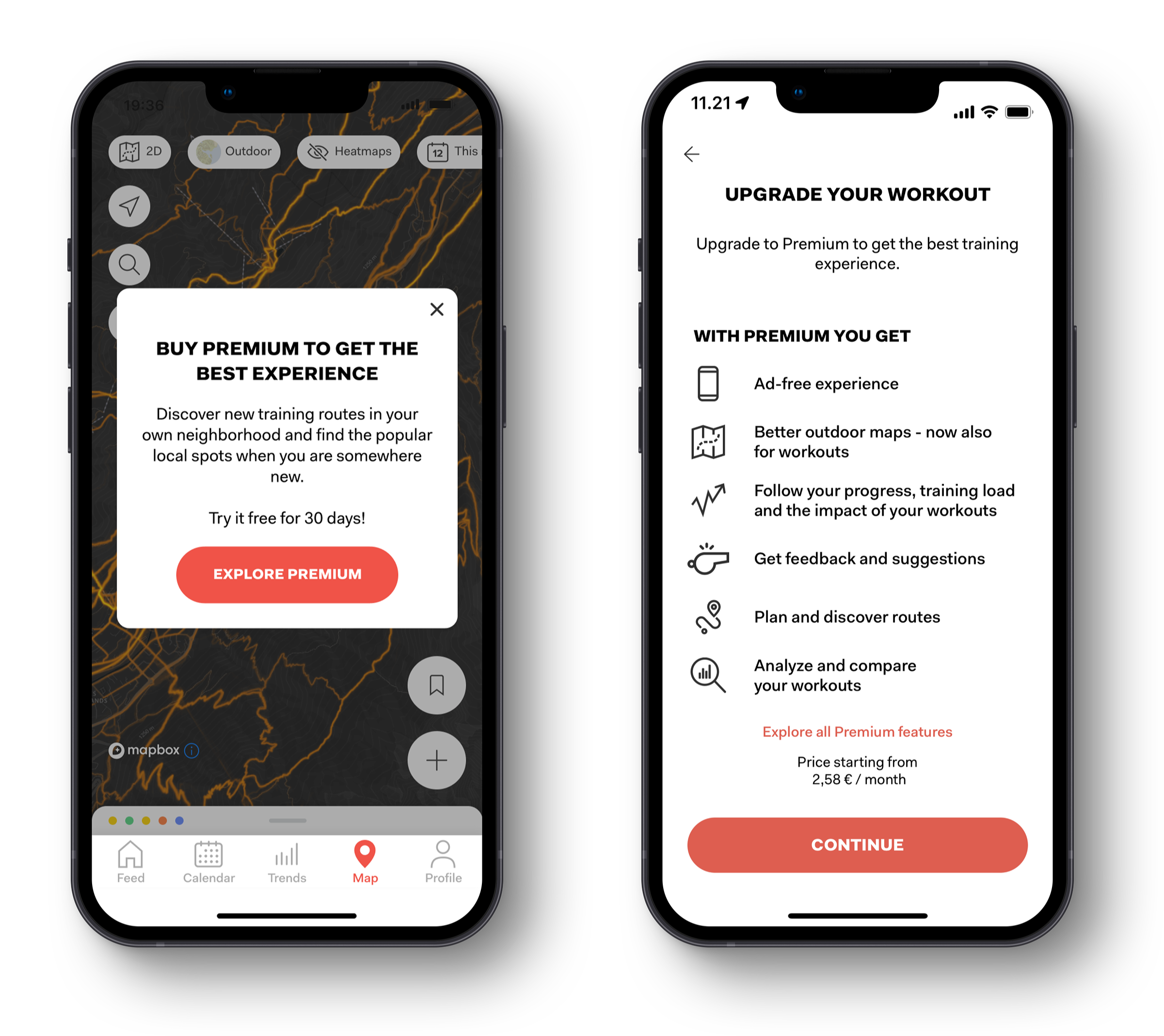
Sports Tracker was the world’s first mobile sports tracker, utilising GPS technology to enable detailed fitness tracking. It is currently owned by Suunto. Today it’s used in over 40 countries and has 700k active users in Finland alone. In addition to moving people, Sports Tracker has expanded its usage to physical education, especially during the COVID-19 pandemic.
Despite its popularity, Sports Tracker has faced financial challenges which have led to discussions of potentially selling or discontinuing the app. The Premium subscription model initially launched for Android in 2014, saw declining revenues after peaking in 2016. In addition to Android Premium, in-app advertisements were the app’s only monetization model and weren’t enough. Thus a strategic decision was made to shift the focus to iOS, driven by the app’s existing Apple Watch integration and the growing smartwatch market.
The shift to iOS was aimed to harness its untapped potential, aligning with the industry’s growing focus on integrated health and fitness platforms – such as Apple HealthKit. Sports Tracker set its sights on catering to a market that demands more from their fitness experiences – not just seamless integration but also a rich array of features that bridge health, fitness, and smartwatch functionalities.
Harmonising business goals with user needs
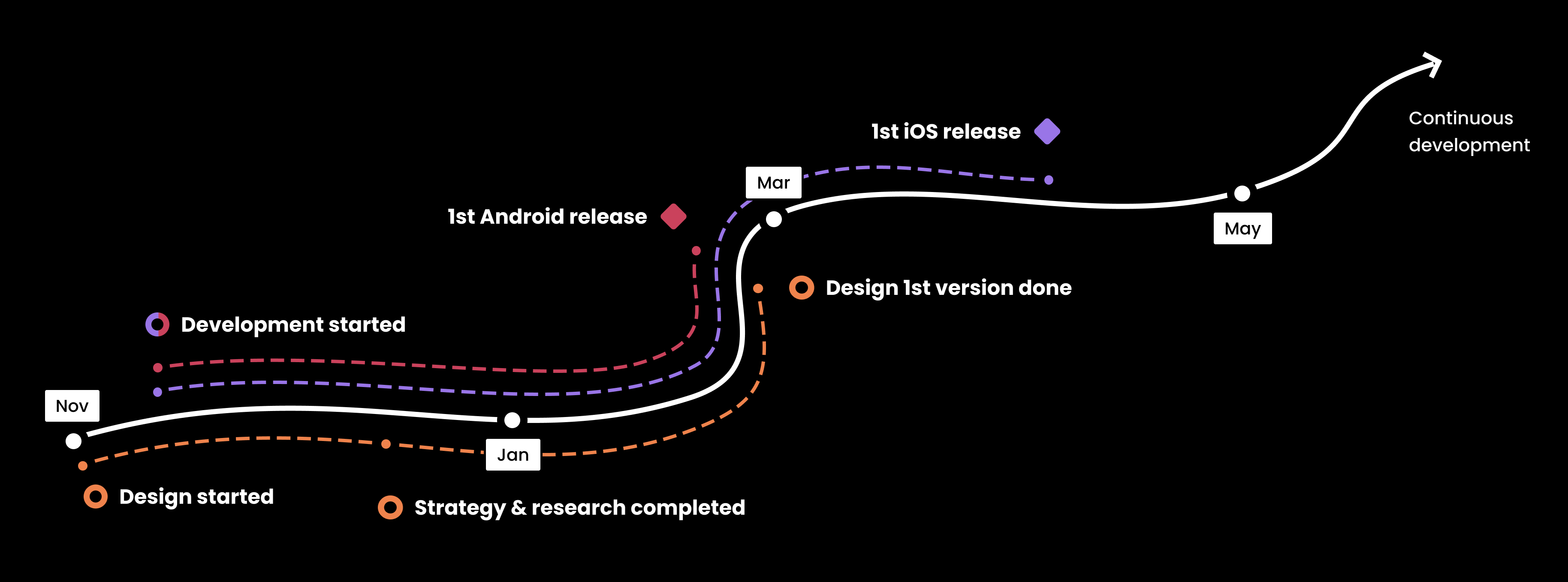
We kicked off our project by hosting a workshop to establish our own ways of working. Using business design principles, we developed a clear vision and strategy, setting multifaceted goals through a Balanced Scorecard that covered Financial Performance, Customer Engagement, Internal Processes, and Innovation. Our focus was on critical metrics like the number of Premium users, which was essential considering the app’s viability, alongside financial and user growth targets.
Our commitment was to enrich the experience for all users, free or premium. Recognising Sports Tracker’s role in promoting physical activity, we aimed to ensure accessibility for every user. We made sure to preserve the free features vital for educational use, balancing innovation with the app’s broader societal impact. For this reason we didn’t want to hinder the amount of tracking the user can do. One of Sports Tracker’s most important goals is to keep people moving.
In developing Sports Tracker Premium, we paid close attention to our users’ needs and preferences. We used surveys to measure the resonance of our ideas for Premium. Through surveys, we asked straightforward questions like, “Would you pay for this feature?”, “Would you still use Sports Tracker if this was behind a paid subscription?” and gauged interest in new possibilities for our app. This direct feedback helped us understand what features our users valued enough to pay for and what we were missing.
We also looked closely how users interacted with the app by utilising data – which features were popular and which sports were most tracked. This helped us build a clear picture of our typical user, guiding us in designing features that truly mattered to them. The interaction data together with the survey results made us see that, for example the Calendar feature is crucial for many users and it was thus kept on the free version.
Sparring with AI and managing user expectations
For the launch of our new Premium version, our focus was first on our existing users, with plans to attract new users once we had our full package, including the mobile and watch app. Communication was key in this phase. We implemented in-app ads for the current app to give users a preview of the new features and convey the added value they offered. In this phase, we used ChatGPT which allowed us to craft and iterate various versions of our messages, enabling us to pinpoint the most effective way to connect with our users. In addition to sparring with AI, we also sparred with users. Quick and dirty user testing was done with several UI copy versions and asking users how they understood the texts as well as what emotions raised.
We were mindful of user reactions, especially since moving certain features of our free iOS platform behind a paywall was a significant change. To ease this transition, we started communicating about these changes a month before the launch. This preemptive approach helped manage expectations and smooth the transition for our users. In our user-focused launch, we aimed to show not just the value of Premium, but also its necessity for keeping the app thriving, ensuring users understood this step was about sustainability, not profit.
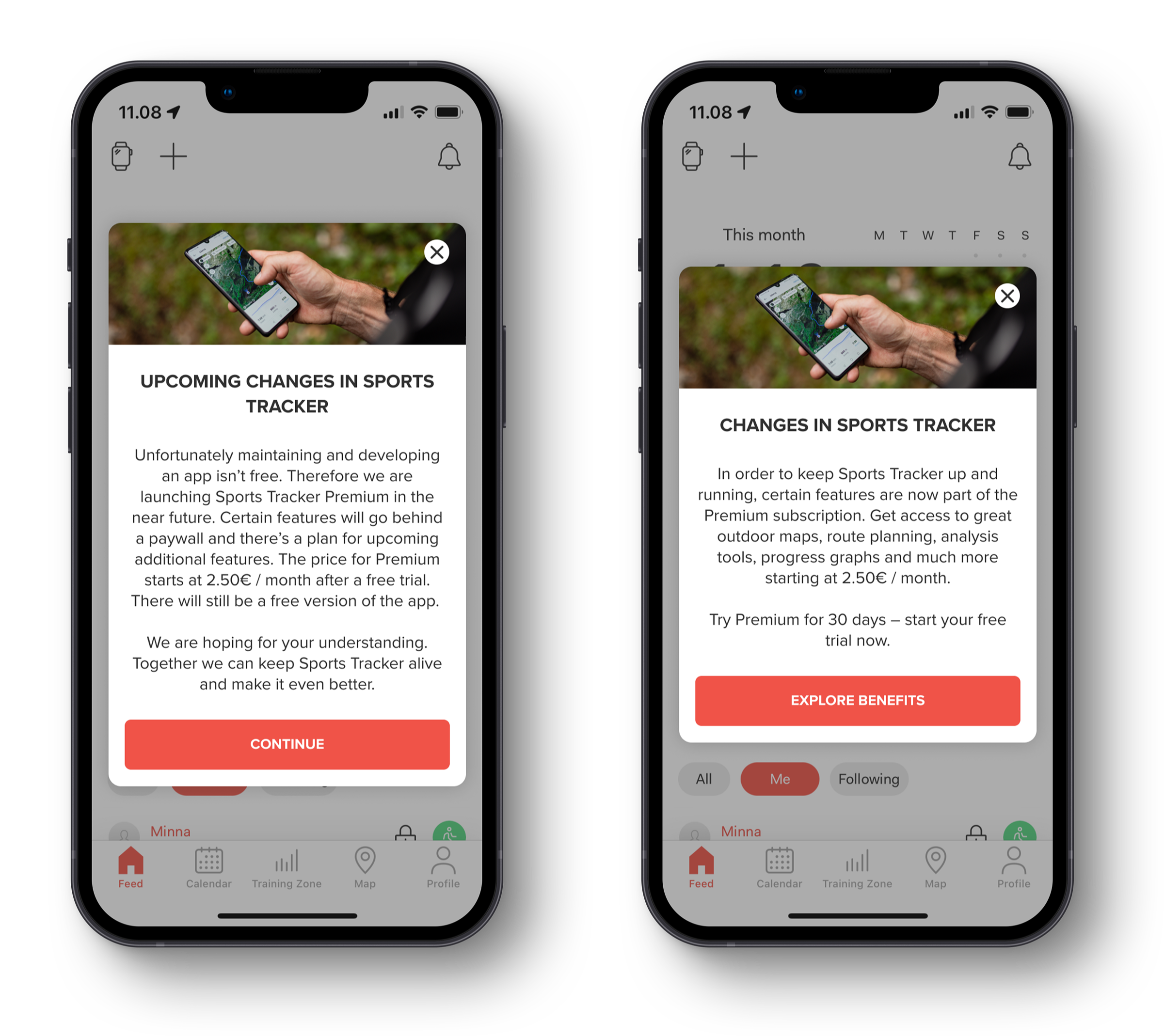
The value of using Sports Tracker Premium

For both the Android and iOS version of Sports Tracker Premium, the following old features were put behind the subscription:
- In Map: road surface, heatmap, my tracks, creating route, terrain and nautical maps
- In start activity: ghost target, audio feedback, follow route
- In single activity: previous on this route, comparisons, full screen analysis
- Progress
- Tags
In addition the following new features were added to Premium:
- HRV Heart Rate Variability helps the user to understand their recovery state (iOS)
- 3D Maps (iOS and Android)
- Summary allows user to filter, compare and analyse their previous workouts (iOS)
- Overview helps the user to manage their training and includes an AI-based coach (iOS)
- Sleep (coming in 2024)
The pre-renewal Android Sports Tracker Premium only included certain map features. The buying flow wasn’t user-friendly as the user could only buy Premium from their settings. it was hard to find where to buy it. Now the user can buy Premium from their profile or by clicking the in-app call-to-actions (CTAs) that are on top of each Premium feature, making the buying flow a lot easier. Also keeping the Premium features within the app and behind a CTA, doesn’t compromise the user flow of old users. The information architecture remained the same, which means that when a user buys Premium, they don’t need to learn how to use it.
When launching new features, we published the first version of the feature and added more elements later on. This made it easier for users to get used to the feature as well as allowed us to work in an iterative way based on feedback from the first version. Adding the new features for Android are on the roadmap together with the Android smartwatch connection.
Due to Suunto and Sports Tracker sharing a similar app structure, our new features not only supported Sports Tracker’s vision, but also Suunto’s. Features like Summary and HRV were also implemented on Suunto’s side and we were able to utilise Suunto’s new Overview feature as part of our Premium subscription.
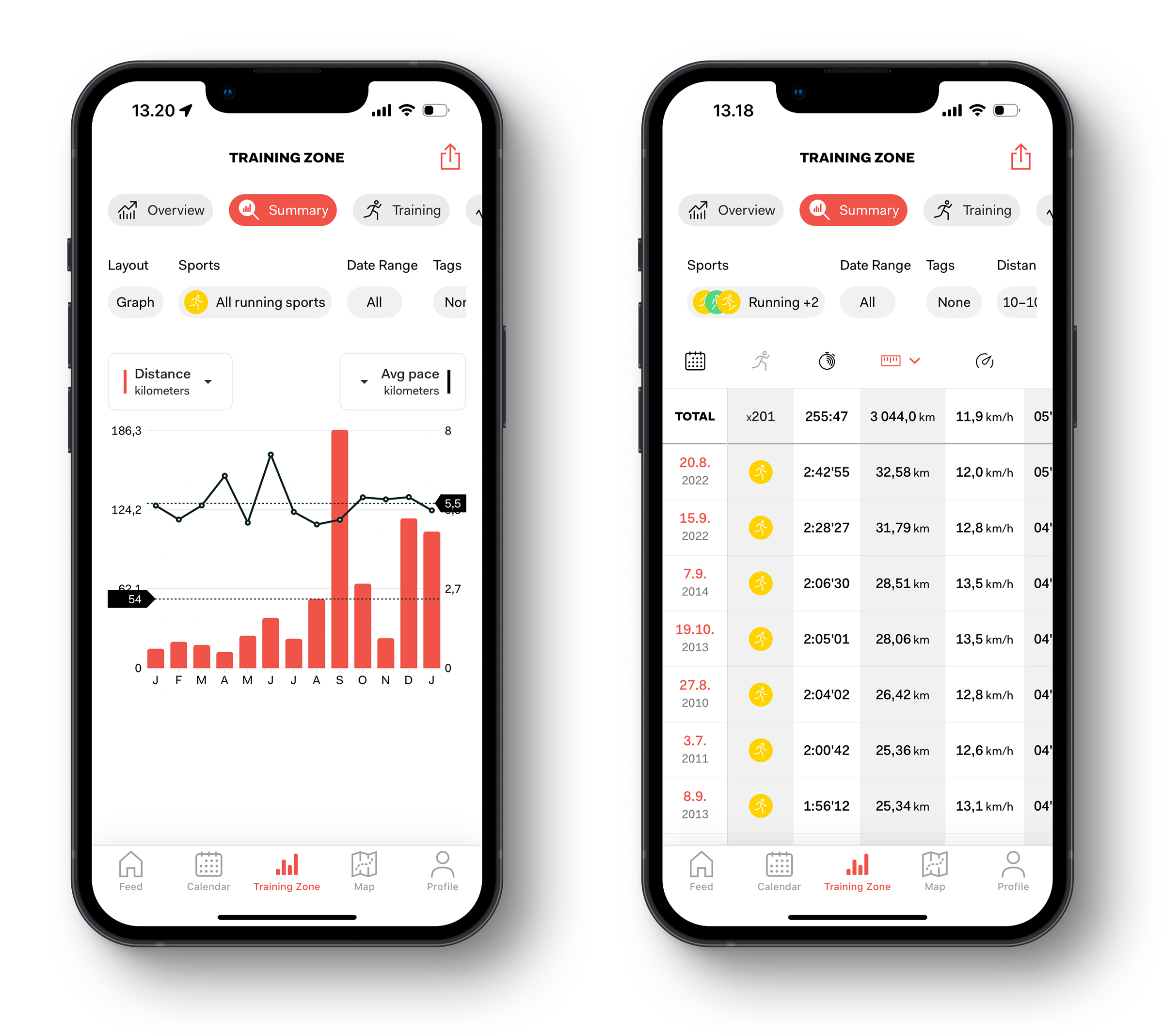
Feature example: Summary
Here we have the biggest, the best, the most asked Feature what we have ever had in mobile apps
Mikko Järvinen, Suunto Fieldtest manager talking about the Summary feature
When collecting feedback and asking users what is missing, we realised the users don’t have a way to see certain data such as their longest and fastest run, combined skiing distance during the skiing season, comparing races from the past year or the data of all your cycling sports combined. The combined user problems created the need for Summary. When creating Summary, we conducted surveys, did user testing and launched the feature in three parts. This allowed us to collect data and feedback between launches and fix possible problems efficiently. We also had several discussions among developers and design throughout the process in order to create the best solution. Though some elements were created from scratch, we wanted to utilise our design system and elements that are easy to modify for cost-efficiency. The Sports Tracker team’s feature was also integrated into the Suunto app and received high praise from users on both platforms.
Perfect! I will upgrade to premium soon! Thanks for your job!
User feedback
Out of 400 survey recipients:
65% were extremely or very interested in the Summary feature
28% would buy Premium to use Summary
Rate 10 out of 10!
User feedback
Remarkable results: beyond viability to a success story
Our focus was on KPI’s that were vital for the app’s viability. The results were astounding – our first-month subscription goals were met in just four days, annual revenue targets were reached in four months, and our yearly subscriber goal was achieved in three months.
The success of Sports Tracker Premium is a testament to the power of a dedicated, small team and smart marketing. Our team achieved remarkable results with limited resources.
Antti Sorvari, Sports Tracker PO
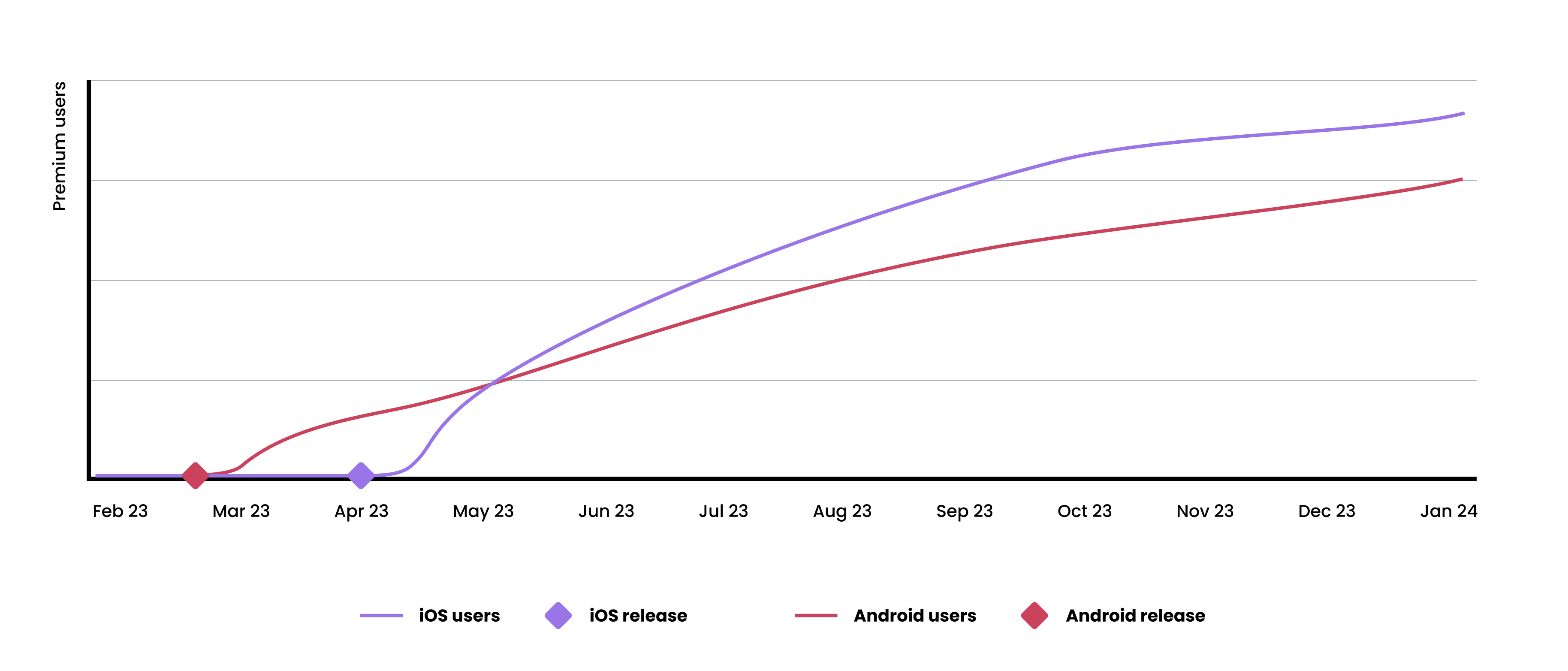
Since its launch in April 2023, Premium iOS has earned 259,000 euros, while the enhanced Android version, released in February, brought in 312,000 euros – a 66% increase from the previous year. Together, these efforts resulted in an impressive total revenue of 571,000 euros for Sports Tracker Premium in 2023.
Both platforms saw a 70% user retention rate in 2023 – meaning 70% of users who took the free trial, continued with the subscription. There was also a 68% growth in Premium users on Android.
Despite concerns about alienating free users, the decrease in active users was minimal, aligning with pre-Premium release trends. Our approach of involving users from the outset and our clear, methodical work methods have been crucial in making the Premium model a success. More than just keeping the app afloat, we’ve turned it into a thriving success story, ready to continue its growth in 2024.
€571k
Total
revenue
66%
Revenue growth
on Android
70%
User retention
on Android and iOS
3 mos.
To reach annual subscriber goal on iOS
I like Sport Tracker very much, it makes me move, thank you for that 😊
User feedback
Great programme, I lost 30 kg with it
User feedback
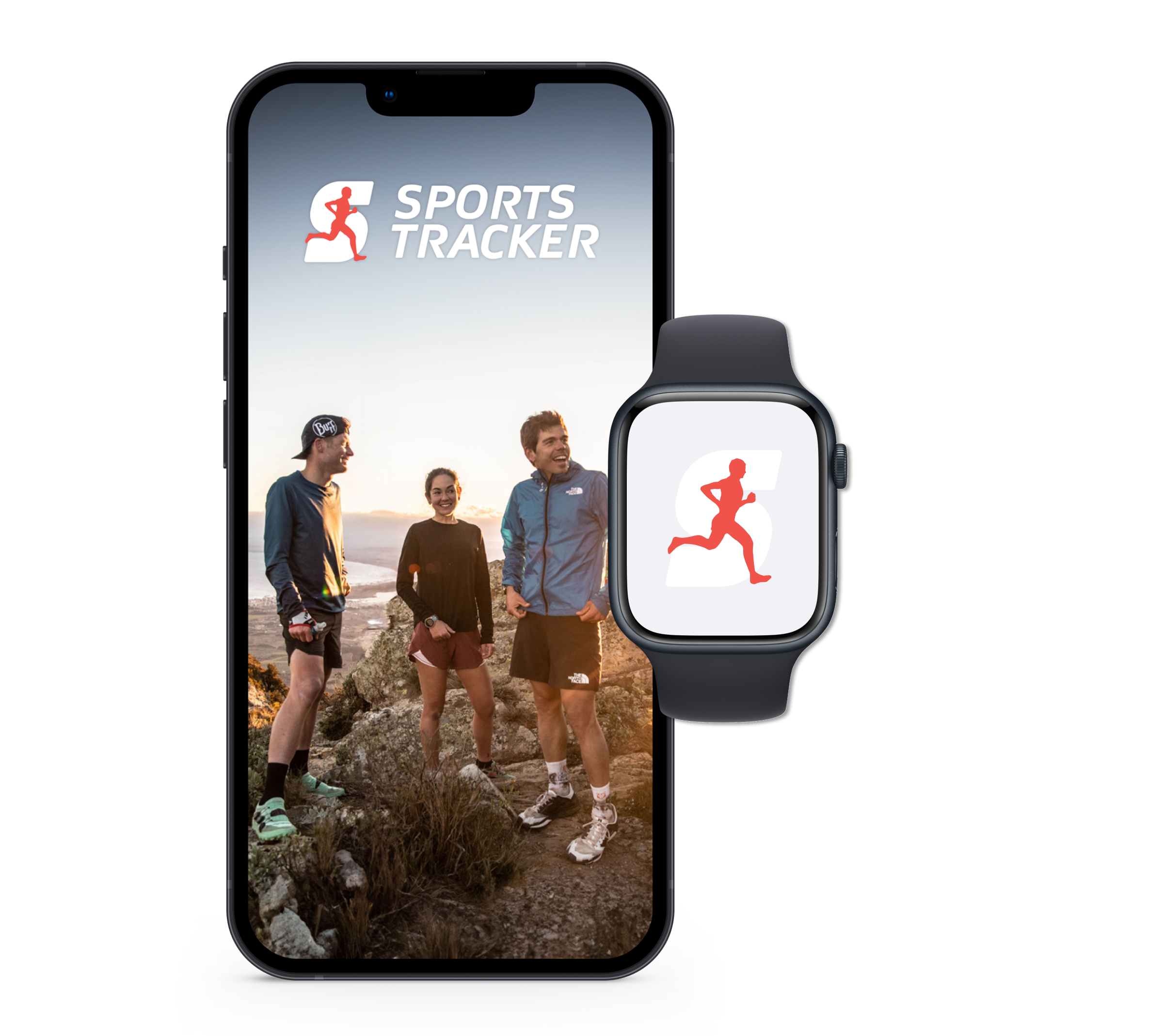
Moving forward
During 2023, we’ve expanded Sports Tracker Premium with exciting features like HRV for tracking recovery, and a comprehensive Summary for analysing all training data. Premium subscribers now enjoy even more functionalities, while free users benefit from enhanced tracking and an easier sport search experience.
Looking ahead, our goal is to offer users a complete package. While our mobile app has much to offer, we recognise it’s still competing with sports watches. With tech giants like Apple enhancing their sports features for both mobile and smartwatch, we see an opportunity. Our vision is to merge the best aspects of a sports watch with the versatility of a smartwatch. Imagine our already robust mobile app, now paired with an equally impressive smartwatch application – that’s the future we’re building towards.
The team
Antti Sorvari (Suunto, Product Owner)
Minna Nurminen (Qvik, Lead Designer)
Oona Lindqvist (Qvik, Product Designer)
Jarkko Saarinen (Vincit, Android Developer)
Joel Pöllänen (Qvik, iOS Developer)
Ekaterina Khudzhamkulova (Qvik, iOS Developer)
Yikai Deng (Suunto, iOS Developer)
Cheng Guo (Suunto, iOS Developer)
Thank you to all the people of Suunto and Qvik who supported us and sparred with us throughout the process
This site is made for the Grand One 2024 competition and takes part in the Best Service Design and Best User Experience categories.

